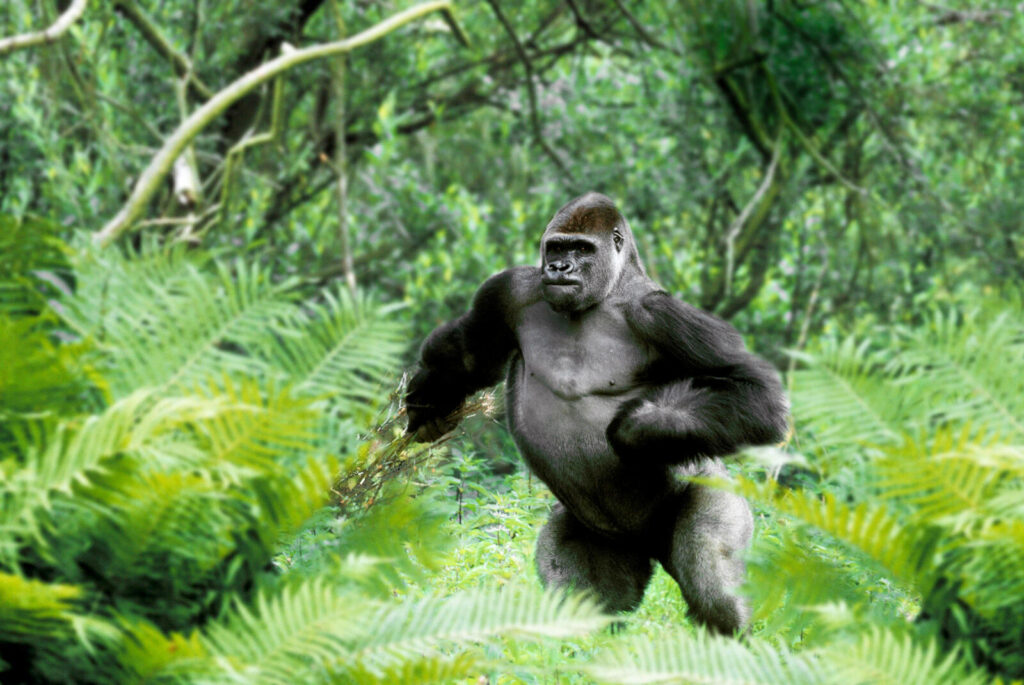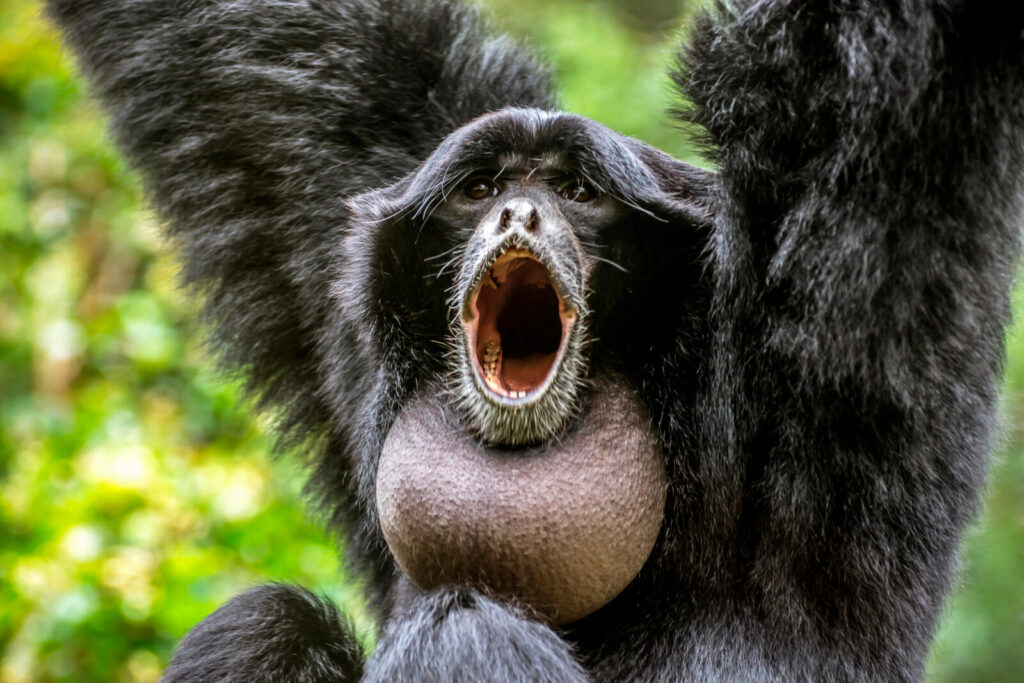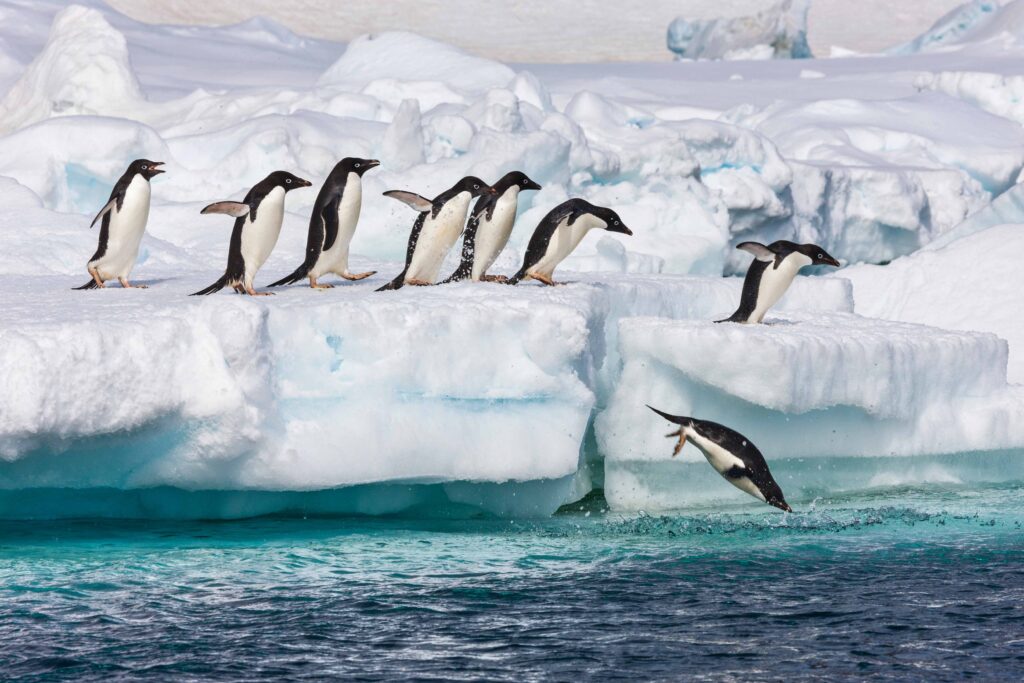Written By: Daniel S. Levy
The following is from LIFE’s new special issue Apes: Their Remarkable World, available at newsstands and online:
Two rangers quietly sat on a platform 25 feet up in a tree with a large pile of bananas and red buckets filled with milk. As I watched, a dozen orangutans quickly climbed and swung over to grab the fruit and stick their heads in the buckets for a drink. The orange-haired apes then lounged around, undisturbed by the humans alongside them.
Half a mile further into Borneo’s Kabili-Sepilok rainforest it was much less hectic. The air felt humid. I could smell the earth and hear the droning sound of cicadas filling the forest as I avoided the leeches dropping from above. Up ahead I spied another feeding platform. The rangers there sat alone as they scanned the trees but saw no signs of orangutans eager to eat. One of the men bellowed out an apelike long call to announce their presence. Soon a single female with an infant gripping its fur lowered from the canopy above. She snatched some fruit and quickly disappeared back into the jungle.
The Sepilok Orangutan Rehabilitation Centre near Sandakan, Malaysia, serves as a temporary home for the apes. Infants rescued from habitats destroyed by logging and orphans whose mothers have been killed by poachers are treated and cared for, their beseeching hands reaching out to anyone who enters the nursery. “It’s difficult when the orangutans come in very young,” Reynard Gondipon, the center’s veterinarian, told me as he showed me through the facility. “I urge the rangers to hug them every now and then.” As they grow, the orangutans are moved out onto the grounds of the 9,000-acre center. There these naturally solitary creatures live alongside others as they learn the lore of forest life: how to climb, build nests, search for food, survive. Slowly, like the mother and child who disappeared into the canopy, they embrace the wilds. Once it is determined that they can fend for themselves, Sepilok’s staff transport them into the forest far away from humanity.
I have long been fascinated by our closest living relatives and our linked ancient ancestry. In the early 1980s I was thrilled to hear presentations by all three of the primatologists known as the Trimates—Jane Goodall, Dian Fossey, and Biruté Galdikas—when they were in New York to discuss their studies of chimpanzees, gorillas, and orangutans. I recall Fossey mentioning a visit to the American Museum of Natural History’s Akeley Hall of African Mammals. While there, she stopped in front of the mountain gorilla diorama. The creatures behind the plate glass had been shot in 1921 by naturalist Carl Akeley during an expedition he led for the museum. Akeley soon after convinced the Belgian government—which controlled the land where those gorillas once lived—to create a national park to protect the apes. Fossey spoke of how she mourned the taxidermic creatures forever frozen in the case yet appreciated Akeley’s and the museum’s efforts to study and save those still in the wild. Of course, Fossey would die only a few years later as she herself fought to protect gorillas in the remote rainforests of Rwanda’s Virunga mountains.
The work Fossey, Galdikas, and Goodall dedicated their lives to is not for the faint of heart. Galdikas recently described to me the hardships she endured studying Borneo’s orangutans: “You are sitting in the swamp. It is so primeval. You couldn’t stand the buzzing of the mosquitos, the buzzing of the other insects, the horseflies that bite you. They really hurt, just a sharp hurt. And of course, the leeches.” But she also experienced true joy observing the magnificent animals, recalling how on Christmas Day 1971 at the start of her time doing her research she watched a mother and its child emerge from its tree nest. Galdikas called the sight “the best Christmas present.”
Humans and the great apes (chimpanzees, bonobos, gorillas, and orangutans) and smaller apes (gibbons) share a common past. Our species diverged millions of years ago and evolved. Earth’s human population was about 1 million in 10,000 BCE, and 3 billion when Goodall arrived in Tanzania in 1960. There are now 8 billion people on earth. While the human population has exploded, that is not the case for apes. In 1900 there were more than 1 million chimpanzees in the wild. At most, a third of that number now exist. Orangutans have dropped from 300,000 to roughly 100,000.
Many more will perish, as the human population is expected to reach 10 billion by 2100. Apes’ numbers have been decimated, as they lose their habitats to deforestation and their lives to poachers. While there are laws to protect these species, trafficking is highly profitable. Each year, thousands of young apes are captured, with baby gorillas being offered for more than half a million dollars on social media sites like WhatsApp.
There are, though, hopeful signs for some ape populations as they and their habitats are being protected. The mountain gorillas in Uganda’s Bwindi Impenetrable Forest have seen their numbers increase from 254 in 1981 to more than 1,000 today, due to intense conservation practices and ecotourism.
To preserve their habitats, governments and organizations have trained locals to manage the forests. This creates jobs and encourages communities to protect what they have. The Dian Fossey Gorilla Fund has trackers who monitor daily the largest of the apes where Fossey set up camp back in 1967. “These guys are the front line of conservation,” says Tara Stoinski, president of the fund. “They are the reason that these animals are still on the planet. These mountains are cold, they’re wet, and they are tracking up to 13,000 feet 365 days a year. They are true conservation heroes.”
Galdikas’ Camp Leakey and her Orangutan Care Center and Quarantine facility in the Indonesian village of Pasir Panjang 700 miles southwest of Sandakan similarly cares for and rewilds apes. And the new 117,000 acre Ekolo ya Bonobo, created by Claudine André in rainforests in the northwest of the Democratic Republic of Congo, has become home to freed bonobos. There are fewer than 2,500 Javan silvery gibbons left in the wild, and the Aspinall Foundation in conjunction with the Indonesian government has successfully reintroduced two dozen into protected areas.
Such work is an uphill and often dangerous battle. Legions of researchers, scientists, and volunteers have devoted their lives to watching over, studying, and protecting our magnificent relatives. As the great primatologist George Schaller wrote of the gorillas in National Geographic in 1995, which holds true for all the great and smaller apes, “We have a common past, but only humans have been given the mental power to worry about their fate.”
Enjoy this selection of photos from LIFE’s new special issue Apes: Their Remarkable World.

Nick Ledger/Alamy; (background) Gudkov Andrey/Shutterstock

A chimpanzee mother and her baby at the Conkouati-Douli National Park in the Republic of Congo.
Gudkov Andrey/Shutterstock

As it is with human children, chimpanzees like to have fun. Playtime is an important developmental activity and can lead to breathy laughter. Three-year-old Gizmo and his 8-year-old brother Gimli enjoyed a bit of roughhousing at Tanzania’s Gombe Stream National Park.
Anup Shah/Stone/Getty

The bonobo is often mistaken for a chimpanzee, but it smaller and slimmer.
Gudkov Andrey/Shutterstock

Gorillas are the largest living primates.
P. Wegner/imageBROKER/Shutterstock

Orangutans like these have the most intense mother-child relationship of any primate besides humans.
Freder/E+/Getty

The Siamang Gibbon makes sounds that can be heard two miles away.
Steve Clancy Photography/Moment/Getty

A lar gibbon and its child swing through the forest canopy.
Kittipong Chotitana/Shutterstock
















